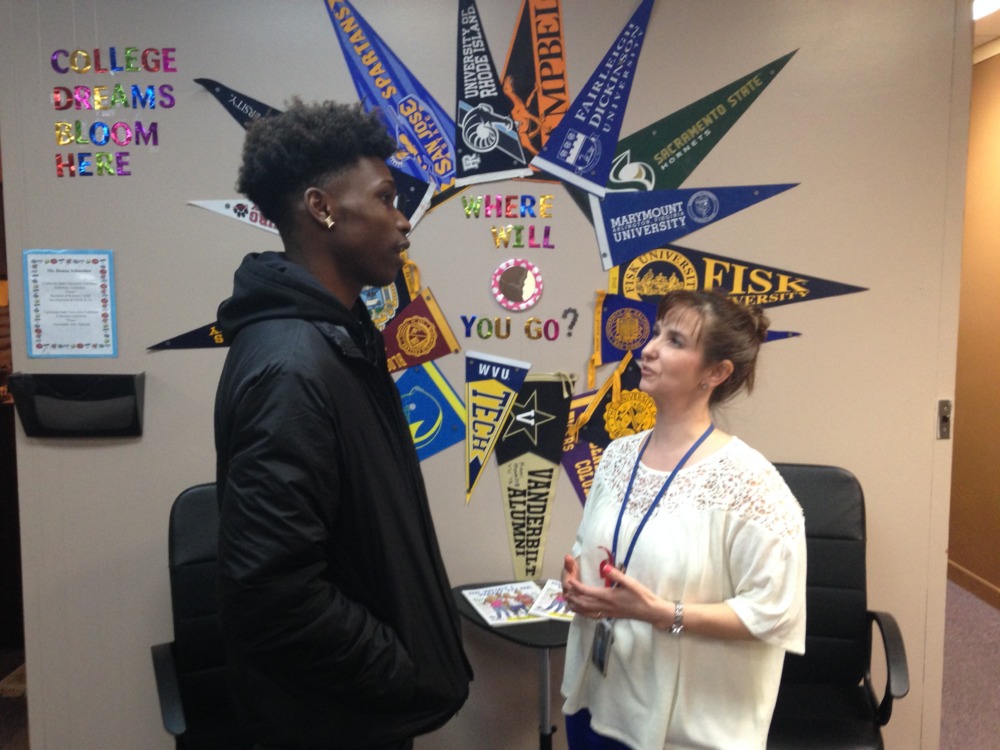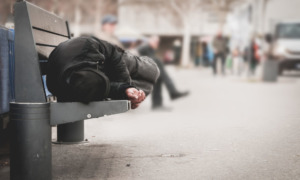The $800 million that the American Rescue Plan earmarked for homeless students is the largest such federal expenditure in a decade, with that money, thus far, paying for everything from student cellphones to educators’ overtime pay to hiring more special education staff.
Nevertheless, as those dollars trickled out to school districts, what was still being determined is how much of the funding will go toward homeless students with disabilities and in what ways it will be spent.
 “As with any vulnerable population, [homeless students with disabilities] are exactly the people most likely to slip through the cracks,” said Michael Hickey, executive director for students in temporary housing at the New York City Department of Education. “The gold standard is that every one of those young people has access to somebody who is dedicated to being their navigation partner,” identifying and addressing their greatest challenges.
“As with any vulnerable population, [homeless students with disabilities] are exactly the people most likely to slip through the cracks,” said Michael Hickey, executive director for students in temporary housing at the New York City Department of Education. “The gold standard is that every one of those young people has access to somebody who is dedicated to being their navigation partner,” identifying and addressing their greatest challenges.
Data from the National Center for Homeless Education suggest that 19% of homeless students have some form of disability; that compares to 14% of housed students. And estimated 30% of those living In New York City shelters have a disability, according to Advocates for Children of New York.
Being both homeless and disabled results in either of those characteristics sometimes obscuring the other, said Barbara Duffield, executive director of Washington, D.C.-based SchoolHouse Connection, which partners with schools and social service agencies to help homeless students get a quality education. Because their housing is unstable, she continued, homeless students with disabilities often have the latter challenge go unnoticed or unaddressed more frequently than their housed peers.
“Maybe they are referred for an assessment but it never catches up with them, because they move,” Duffield said.
Homeless and disabled overlooked
“Overlooked: The Far-Reaching Consequences of Late Identification of Homeless Students for Special Education Services,” a 2016 New York City Department of Education report, concluded, among other things, that 41% of homeless students with special education needs had gotten a federally mandated individualized education program, detailing their classroom curriculum, instructional needs and supports and such, when they entered kindergarten. That compared to 55% of special education students with housing.
“Homeless students who receive IEPs early are more likely to remain with their age and grade-level peers and to achieve grade proficiency,” the report’s authors wrote.
Additionally, the report found that homeless students whose IEPs were drafted at the end of kindergarten were held back at half the rate of those who received IEPs later than the end of kindergarten; and were twice as likely to be deemed proficient by the state’s standardized third-grade assessment tests. Homeless students whose IEPs were drafted later were suspended at more than double the rate of those who got their IEPs earlier.
Elsewhere in the country, such disparities also show. In Virginia, homeless students with disabilities have the lowest on-time graduation rate of any group, said Pat Popp, the state’s coordinator of education for that population. Those same youth also are at heightened risk of being homeless as adults.
Program coordination from limited to none
A $3 billion American Rescue Plan allotment exclusively for actual special education instruction comes atop of the $800 earmarked for students who are homeless. That means disabled homeless students should be able to qualify for an even broader array of homelessness-related programming, observers said. But coordination between schools’ homelessness liaisons, who function as caseworkers of sorts, and special education teachers varies widely, New York City’s Duffield said, ranging from being limited to being non-existent.
Sometimes those two groups aren’t trained to work together, Virginia’s Popp said. In some cases they may not even know who the other is.
When designing the learning plan for a student with disabilities, “the [homelessness liaison] isn’t necessarily in the room. They at least need to be at the table or consulted,” Popp said. That’s the only way to develop a holistic, outcomes-oriented learning plan for homeless students with disabilities without further disrupting their lives and schooling, she said.
And even where there is good coordination, some homeless students with disabilities risk falling through the gap because disabilities employees manage caseloads that are too large, said Julio Anthony, a program director for homeless students at St. Vincent de Paul’s Family Services Center in Louisville, Kentucky.
The disabled among them “get first dibs on choosing schools that are best for them, get an IEP and different services … [addressing their type] of disability,” Anthony said, detailing what is working in his city’s schools. But, he added, that schools “could do a little more reaching out to parents,” initiating IEP development based on students’ test scores and following up on parent questions. With such high caseloads among those charged with doing such work, too much of the onus of navigating the system falls on parents and students, he said.
There’s a stark need to increase districts’ capacity to identify and help homeless students with disabilities, Duffield said, and to expand the roster of specialists who both connect students with needed, non-school resources and act as liaisons between schools and students’ parents or guardians.
The good news, Duffield added, is that districts are granted wide berth in how they use the American Rescue Act funds. Previously existing federal McKinney-Vento Act funding, conversely, must go strictly toward homeless student instruction. But, with the rescue act, Duffield said, “You can put someone in a hotel for a couple nights, repair a car if that’s what’s needed to get the child to school.”
As they waited to hear the precise amount of funding New York City public schools would get, education officials hosted five town halls late last year to glean a better understanding of all homeless students’ needs and to determine how to build infrastructure and systems that will aid those students beyond the three years of the act’s current funding.
“We understand,” the board of education’s Hickey said, “this is a really big opportunity.”
































